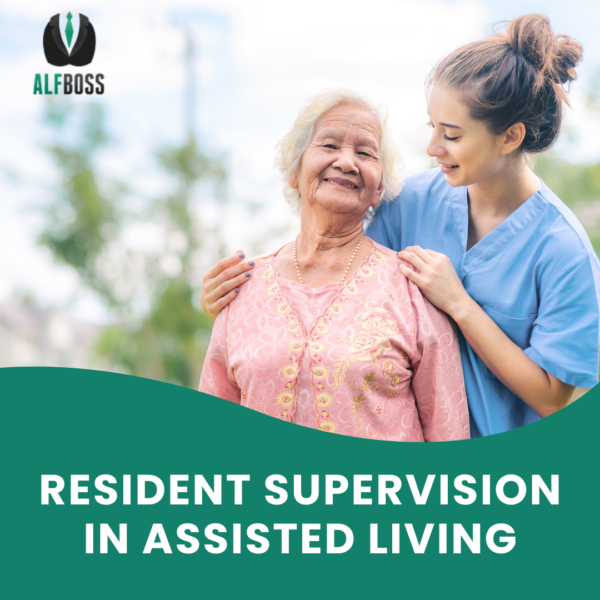
From Regulations to Practice: Resident Supervision in Assisted Living
Welcome to another insightful discussion on the critical topic of Resident Care Standards in assisted living facilities. Today, we delve into the essential requirements outlined in Rule 59A-36.007, focusing particularly on the supervision of residents. These standards are fundamental in ensuring that our beloved residents receive the utmost care and attention tailored to their unique needs.
Personal Supervision:
One of the cornerstone requirements is the provision of personal supervision to residents. Let’s break down what this entails:
- Monitoring of Resident Diets: Ensuring proper nutrition is vital for the well-being of residents. Facilities are mandated to monitor both the quantity and quality of resident diets meticulously. This adherence to Rule 59A-36.012, F.A.C., guarantees that residents receive nutrition tailored to their dietary needs.
- Daily Observation: Designated staff members play a crucial role in observing residents’ activities throughout the day while they are on the premises. This continuous vigilance allows staff to stay informed about residents’ general health, safety, and overall well-being.
- Awareness of Resident Whereabouts: While residents often enjoy independence, facilities must maintain a general awareness of their whereabouts, especially when they venture into the community. This balance between independence and oversight ensures residents’ safety and security.
- Contacting Healthcare Providers: In the event of any significant changes in a resident’s condition, it is imperative for the facility to promptly communicate with their healthcare provider. This proactive approach facilitates timely medical interventions and ensures residents receive the necessary care without delay. Faxing or emailing relevant information can be a quick and effective way to comply, but it’s crucial to maintain a paper trail documenting who was contacted and when, protecting the facility from potential citations during inspections.
- Communication with Family and Guardians: Transparency and communication are key elements in resident care. Facilities are obligated to inform the resident’s family, guardian, or other relevant parties when the resident is discharged or relocates. This ensures continuity of care and fosters trust between the facility and residents’ support network. Similar to contacting healthcare providers, maintaining a detailed record of these communications protects the facility from potential citations during inspections.
- Maintenance of Written Records: Documentation is essential for tracking residents’ health and care requirements accurately. Facilities must maintain comprehensive written records of any significant changes, illnesses, medication administrations, or additional services provided. These records serve as invaluable resources for assessing residents’ progress and addressing their evolving needs effectively.
In conclusion, adherence to Rule 59A-36.007 is paramount in upholding the highest standards of care and supervision in assisted living facilities. By meticulously following these regulations, we ensure that our residents receive the personalized attention and support they deserve. Now, let’s tie in observations and recommendations based on real-world experiences:
Observations and Recommendations:
In my extensive experience conducting mock inspections and observing various assisted living facilities, I’ve noticed a recurring issue concerning staff reporting systems. Inadequate or messy reporting systems often result in critical issues going unreported or unnoticed, compromising the well-being of residents.
To address this challenge, I recommend the following:
- Streamlined Reporting Processes: Implement streamlined reporting processes that make it easy for staff to report observed issues or concerns promptly. This could include standardized reporting forms, electronic reporting systems, or clear communication channels with supervisors.
- Comprehensive Training: Provide comprehensive training to all staff members on the importance of timely reporting and the procedures for documenting and reporting incidents or observations. Regular refresher courses can help reinforce these protocols and ensure consistency across the facility.
- Standardized Documentation: Establish standardized documentation protocols to ensure consistent and organized recording of reported incidents or observations. Clearly outline who is responsible for documenting, where documentation should be stored, and how long records should be retained.
- Feedback Mechanisms: Foster a culture of open communication and feedback among staff regarding the reporting process. Encourage staff to share any challenges or barriers they encounter and be responsive to their suggestions for improvement.
- Follow-Up and Resolution: Ensure that reported issues are promptly followed up on and resolved to maintain staff confidence in the reporting system. This includes documenting actions taken to address reported concerns and communicating outcomes to staff as appropriate.